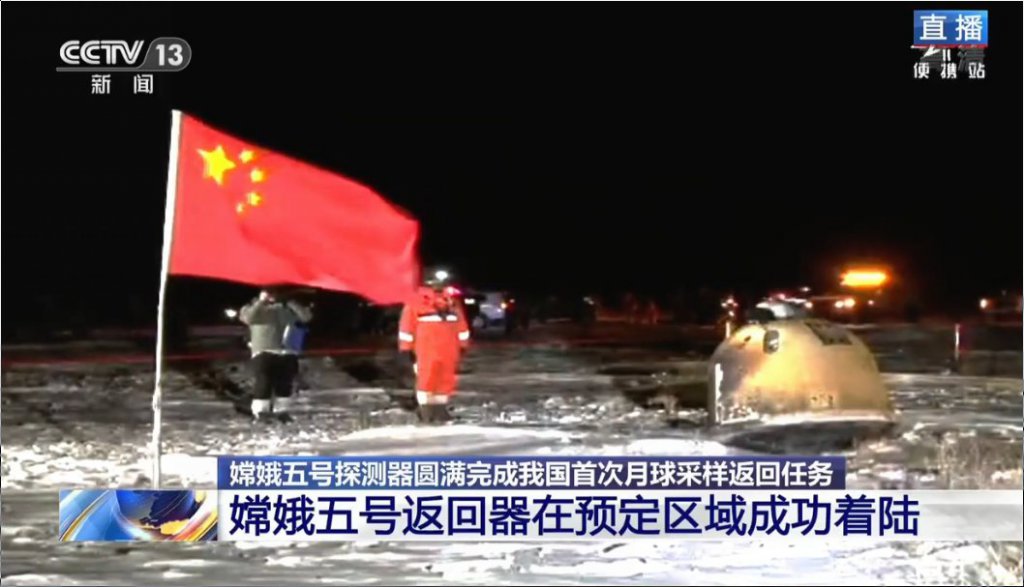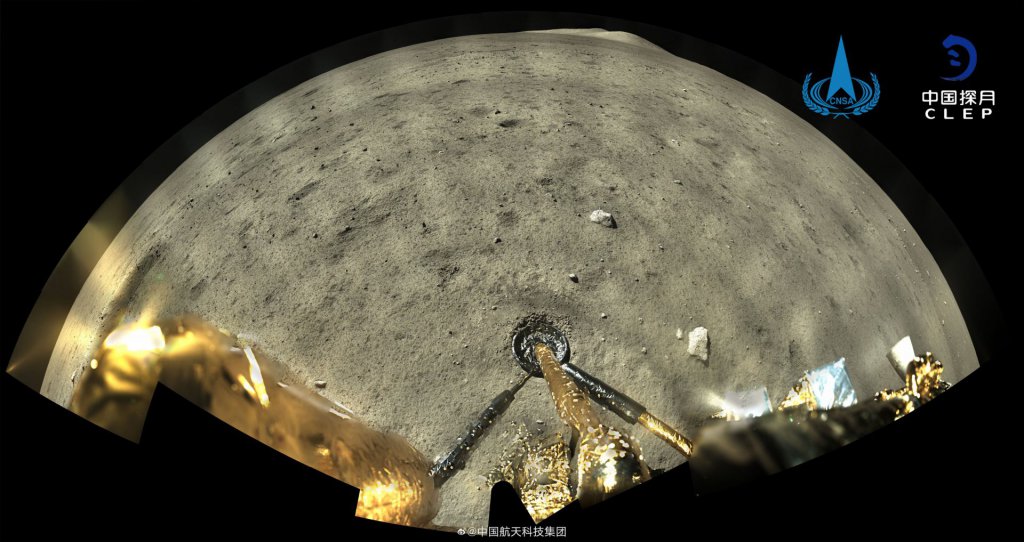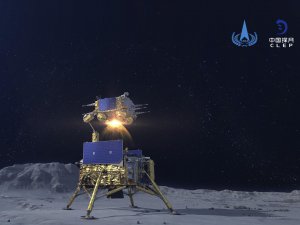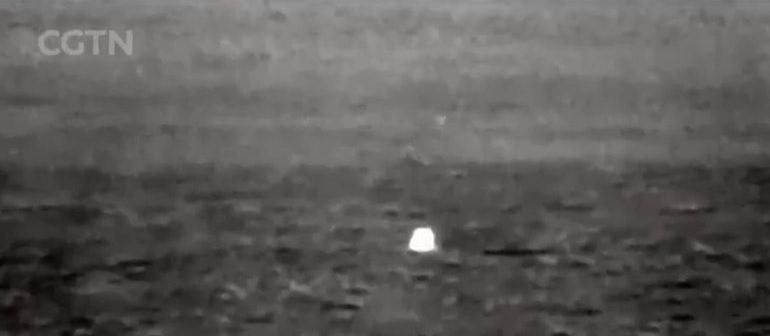The last stage of the Chinese Chang’e 5 mission – the attempt to return lunar samples safely to Earth – has been successfully accomplished. After a “skip” trajectory during re-entry, the sample return vessel landed in Inner Mongolia at around 1730 GMT on 16 December. Chinese space experts have now recovered the precious cargo of just under 2 kg of lunar rocks and regolith dust. China has thus become the third nation to recover lunar samples after NASA did it with the Apollo manned missions in the late 1960s and early 1970s, and the then Soviet Union (now Russia) did it with the Luna missions of the early 1970s.

Rapidly erected Chinese flag placed next to Chang’e 5 sample return capsule shortly after landing. Courtesy: CCTV
The timeline of the Chang’e 5 mission, whose architecture closely matches an Apollo human mission with its lunar orbital rendezvous (LOR) technique, was as follows. The combined Chang’e 5 consisting of a lunar lander/ascent module and a lunar orbiter and sample return craft was launched on 23 November 2020 from the Wenchang launch centre on Hainan Island. The assembly was injected into a translunar orbit. After trajectory corrections, the spacecraft fired an engine to brake itself into lunar orbit on 28 November. After orbital modifications on 29 November, the Chang’e-5 lander/ascent vehicle separated from the orbiter/return vehicle at 2040 GMT and successfully landed on the Moon on 1 December.
The Chang’e 5 ascent module lifted off from Oceanus Procellarum at 1510 GMT on 3 December complete with lunar soil samples and successfully docked with the lunar orbiter/sample return craft at 2142 GMT on 5 December. The samples were transferred to the return capsule at 2212 GMT. Chang’e-5’s lunar orbiter/sample return module made its trans-Earth injection burn at 0151 GMT on 13 December. The return capsule was detached from its lunar orbiter and made a re-entry and landing in Inner Mongolia on 16 December.
With fuel left aboard it was decided to let the Chang’e 5 lunar orbiter have an extended mission. It was sent on its way to the L1 Lagrangian point on the Sun-Earth line. The ascent module was then undocked on 6 December and deliberately crashed onto the Moon on 8 December. Chang’e-5’s lunar orbiter/sample return module made its trans-Earth injection burn at 0151 GMT on 13 December.
Comment by David Todd: While some Chinese political actions on Earth, ranging from political and ethnic repression to the Coronavirus cover up, have created disdain within the international community, this space achievement is something that China should be applauded for. In effect, with this and its previous space station successes, China is now on the point of surpassing Russia’s achievements in space. The choice of method for the Chang’e 5 mission involving an Apollo-like LOR architecture was, in effect, a dry run for a human landing mission on the Moon. China has now demonstrated that it has the technology and skill to achieve this. All it needs now is hardware, notably a very large heavy-lift rocket – its planned 150 metric ton to LEO class Long March 9 – and a lunar lander/ascent craft to carry its “Taikonauts” to and from the lunar surface. It can only be a matter of a few years before China succeeds in this.










